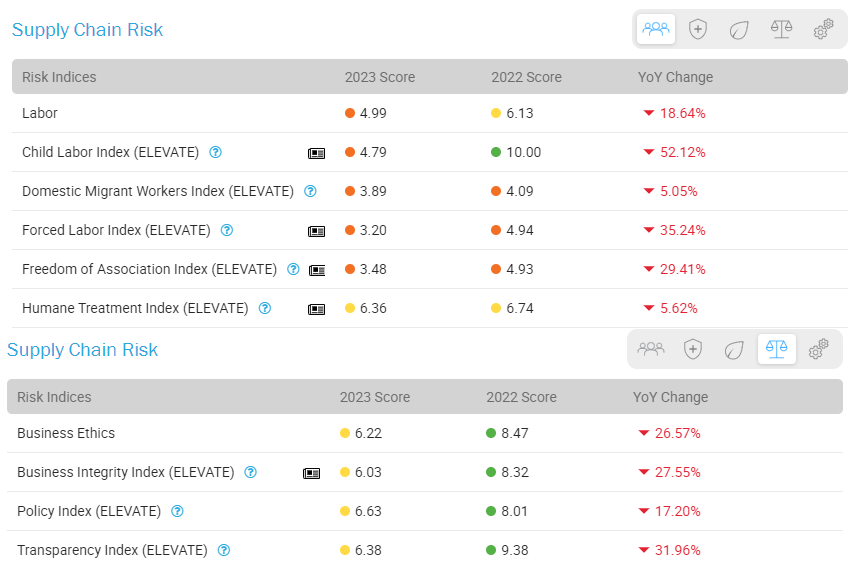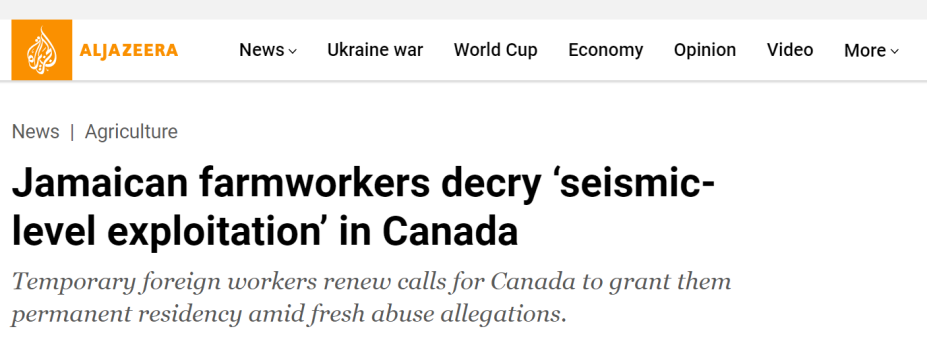Canada and Supply Chain ESG Risk: Why Lower Risk Countries Should Not Be Ignored
Whether it be through ESG violations detected from onsite audits or incidents captured by media outlets, lower risk sourcing regions are no longer “low risk” for responsible sourcing programs. Supply chain ESG data has shown us this year that ignoring any region’s ESG risks, low or high, can leave supply chains exposed to potential reputational and operational damage.
Canada, for example, has continually maintained a moderate standing in supply chain ESG risk, often showing lower risk in most areas and overshadowed by a higher-risk USA. However, Canada’s supply chain ESG risk scores had significant worsening trends in the past year and media reports linked the country to alleged human rights violations.
Child labor risk in Canada sees significant rise
According to data from more than 20,000 onsite audits last year, Canada’s child labor risk dropped more than 50%, bringing Canada’s child labor risk score from low risk to high risk by way of our ratings.
This score is based on violations uncovered from onsite assessments pertaining to child labor. A high-risk indicator means critical violations were detected from sites. Canada saw a similar change in its forced labor score, which dropped further into the high-risk category this year. Alongside these categories that saw worsening scores were the country’s freedom of association risk, business integrity risk, transparency, and environmental management, which now all fall in either a high or medium risk category.
Fig 1 & 2 show Canada’s Supply Chain Risk Indices found in our Supply Chain Due Diligence Assurance Platform EiQ.

Receive a free risk mapping demo in our EiQ platform here.
News stories discovered by our adverse media-scanning tool Sentinel also highlight the ongoing supply chain ESG risks of Canada. These stories include reports of labor exploitation and poor working conditions for migrant workers and allegations of inhumane treatment in the farming industry. One report described how thousands of Jamaican migrant workers who worked for Canada’s agricultural sector sent a letter last year to the Jamaican Minister for Labour and Social Security claiming alleged inhumane conditions in Canada’s foreign worker agricultural program known as SAWP (Seasonal Agricultural Worker Program.) The workers said the conditions of the program were akin to “systematic slavery.” Canada’s government later denied the allegations.

Despite Canada’s worsening scores in some areas, the country still shows promise as a lower risk country in other key categories. Canada’s health and safety scores and environmental scores remain lower risk, especially in categories like wastewater treatment and air emissions, both prevalent topics in today’s climate change dialogue.
Especially exposed: lumber, oil, mining
Canada’s supply chain ESG risk is important to note because while the country may not be as large an exporter as say, the US or China, the country holds a significant place in the global value chain. Canada’s vast natural resources and strong trade ties make it a vital exporter across many sectors. Canada is one of the world’s top oil producers as well as a top global lumber producer. The country also has a significant hand in sectors such as mining, agriculture, and technology.
Canada’s participation in trade agreements like the USMCA (United States-Mexico-Canada Agreement), CETA (Comprehensive Economic and Trade Agreement with the EU), and CPTPP (Comprehensive and Progressive Agreement for Trans-Pacific Partnership) positions it as a key trade hub connecting North America, Europe, and the Asia-Pacific region.
Imposing legislation – but how effective?
Canada is among many countries imposing new legislation aimed at mitigating human rights violations in supply chains. The country recently passed the Fighting Against Forced Labour and Child Labour in Supply Chains Act, requiring companies to disclose their efforts to eliminate forced labor abuse from their supply chains.
The law is largely focused on a company’s reporting efforts, rather than holding enterprises liable for forced labor violations uncovered. The ambiguity surrounding these types of regulations has created controversy surrounding their effectiveness, similarly with laws in the UK and Australia. While public disclosure is an important step toward risk mitigation, companies must take charge to aggressively assess and remediate high-risk areas where no-tolerance violations are uncovered.
Supply chain risk mapping and segmentation are key components to begin this process. Contact us to find out more on how more effectively segment your supply chain risk.
About the author
